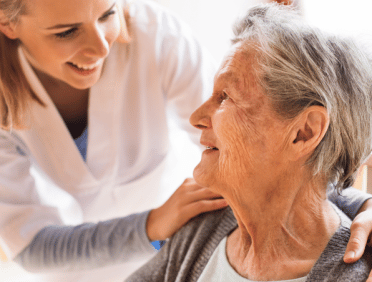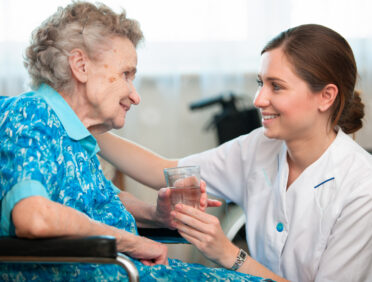When thinking about safeguarding, it is important to understand that there are many facets to consider. Whether or not you are working with children or adults, the kind of safeguarding responsibilities you have for each group and how to apply those safeguarding responsibilities all vary depending on the situation.
Who has Responsibilities for Safeguarding?
To successfully establish who has responsibilities for safeguarding, it’s important to contextualise the situation within a certain environment. When dealing with children in a school environment, the responsibility for safeguarding falls to the teachers and other staff, for example.
However, if dealing with children in a social care setting, like, for example, the foster system, responsibilities for safeguarding would not only fall to the social workers but to anybody who is in direct or indirect contact with the children. This means medical professionals, utility providers, education leaders, and any other group would be responsible for the well-being of the child in addition to the existing responsibilities of social workers and parents.
If we were looking at working with adults in the social care sector, then responsibility for safeguarding would not only fall to the relatives and friends of the individual where applicable, but also to the care workers themselves, any medical authorities that worked with those care providers, the local authority, and emergency services like the police.
The People to Whom Safeguarding Duties Apply
Within the context of specific legislation created to protect both children and adults from harm, safeguarding duties apply on a general basis to any person who has specific care and support needs and is at risk of experiencing neglect or abuse but is unable to protect themselves from the experience of neglect or abuse because of their specific needs.
So, translations for this include vulnerable adults who lack the physical or mental capacity to protect themselves from the risk of neglect or abuse, children who are in the foster care system or in the education sector, or any other situation where somebody who is either classified as vulnerable by the state or under the age of 18.
What Are the Roles and Responsibilities of Managers in Safeguarding?
Managers in the safeguarding capacity have certain roles and responsibilities which they must comply with as part of their standard job description.
First of all, a manager is directly responsible for the performance of the people who work for them. This means that you have to not only create but implement and enforce the safeguarding policy for your workers. The suppliers in any setting, regardless of who your staff are working with.
Second of all, the managers are directly responsible for dealing with reports of abuse or neglect within a specific setting. The safeguarding policy should make reference to the need to report claims of abuse and neglect up the chain to the highest authority. This means that as part of the natural resolution of a claim, the report will be passed to a manager. They then have a duty to adequately investigate this report, take whatever measures are necessary, document the entire process, and then report it to the next highest power in the chain of command.
Finally, as a manager, there is a responsibility to provide accountability to the staff. You have a duty to make sure that staff are actively learning and growing, both within their roles and within general safeguarding as a whole. This means that accountability is required at every level, with managers being expected not only to maintain the performance of their teams but the performance of themselves where necessary.
What Are the Duties and Responsibilities in Health and Social Care?
When it comes to health and social care, the primary thing to understand is that you have what is known as a duty of care. This is a professional and legal obligation to safeguard other people whilst they are in your care, using services you provide, or are exposed to your activities in some fashion.
Understandably, this has a very wide purview, but the general idea is that you have to act in the best interest of the person and not to act in any way that might cause them harm. You also need to act within your ability and not to take on any responsibilities which are outside of your competence. This is a person’s life; there is no room for trying to guess
As a health and social care worker, you have a duty of care which is a legally binding requirement. It is not only something which applies to you, but it also applies to your colleagues, as well as anybody else who is present within your work setting.
To give a popular example, if you work in a care home environment, then the duty of care you have is just as important towards cleaners or maintenance workers as it is towards the users of the service.
The duty of care that you have is non-negotiable. You cannot opt-out of it. Within the health and social care environment, your duty is outlined for you within the code of conduct that you agreed to when you first joined the organisation you work for. It’s important to recognise that when it comes to this duty, you need to not only understand it but have the knowledge and competency required to apply it to situations within your job role.
The Six Key Principles of Safeguarding
Within safeguarding, there are six key principles which must be followed at all times. These are as shown.
Empowerment is all about taking the time to show people the options that they have and encouraging them to make a decision for themselves through informed consent about what their decisions will entail.
Prevention is all about taking the time to prevent the situation from occurring before it becomes an issue. It’s not enough to be reactionary and safeguarding; we have to actively strive to prevent issues of abuse or neglect from even happening.
Proportionality is all about using the appropriate response to a situation. When dealing with claims of abuse or neglect, it’s important to act in a measured, professional manner, investigate the situation, and then take a proportionate action relevant to the scenario at hand.
Protection refers to making sure that you actively safeguard and protect from harm those who are most vulnerable within the community. Anybody who is in need of safeguarding services should be protected, and their well-being put above anything else.
Partnership refers to forming meaningful relationships with both the local authority as well as other relevant parties on a national and international basis for the sake of safeguarding. Information should be freely exchanged that is relevant to the situation, following all data protection laws, for the purposes of protecting individuals or groups from harm.
Finally, accountability is all about making sure that the correct level of transparency is conducted whilst creating and maintaining safeguarding policies. All staff are accountable for their own actions and their enforcement of the safeguarding policy.
The Key Safeguarding Laws
There are key safeguarding laws which need to be understood, recognised and kept in mind when designing and enforcing safeguarding policies. The relevant legislation or law that will be applicable to you depends on the situation.
The Children Act 1989 is a piece of legislation which covers the following fundamentals. Children have a right to be healthy and safe within their environments. Children have the right to enjoy life to the best of their ability. Safeguarding practices dictate that children need to be assisted in their quest to succeed in life. Adults working with children have a responsibility to help make a positive contribution to their lives and to ensure the economic stability of their futures.
The Care Act 2014 is all about working with adults in the social care system. Responsibilities for this include protecting vulnerable adults from harm, creating safeguarding policies which will help to enforce this, recognising the potential issues that may occur and threats of neglect and abuse, being able to identify the signs, and then dealing with it in a relevant way.
The Children and Social Work Act 2017 was an act which was created to make provisions for children who are in the social care and foster system. It was designed to help make provisions in relation to the general welfare of children and to regulate and make provisions for social workers. The primary objectives of the act included helping to improve decision-making and support for children who are looked after in England and Wales, helping to improve joint work at the local level for the purposes of not only safeguarding children but enabling better learning at all levels to improve child protection. Other objectives include promoting the safeguarding of children by providing sex education and relationship education where necessary and helping to establish a new regulatory scheme for the social worker industry in England.
The Safeguarding Vulnerable Groups Act 2006 was created and passed for the sole purpose of helping to avoid harm or the risk of harm by identifying and preventing anybody who is deemed unsuitable to work with vulnerable adults and children from getting access to them through workplace interactions. As a result of this act, in December 2012, the disclosure and barring service, or DBS, became a relevant body. Any organisation which worked with vulnerable groups had a legal obligation to perform a DBS check on new staff to identify whether or not they were safe to work with these parties.
What Are the 4 Responsibilities of Staff Within Safeguarding?
When it comes to the key responsibilities of staff within a safeguarding context, it’s important to refer back to the safeguarding principles. Four of them, which are partnership, prevention, proportionality, and protection, are considered to be the key responsibilities of staff members. This means that staff members have a responsibility to form relationships with local and relevant parties as part of protection, take active steps to prevent abuse and neglect and taking place, respond to situations in a proportionate way, and put the protection of the vulnerable parties above all else.
What Are the 5 Main Safeguarding Issues?
Within the context of safeguarding, there are considered to be five main issues that need to be taken into consideration.
Physical abuse is something which is not accidental harm. This is considered to be deliberate attempts to harm a child or vulnerable adult which can include broken bones, cuts, bruises, or burns. Physical abuse can have serious psychological and physical consequences for vulnerable parties.
Emotional abuse is often referred to as psychological abuse, and the two are interchangeable. This refers to any actions taken which are considered to be ongoing emotional maltreatment. This can involve attempting to deliberately humiliate or scare a person, as well as isolating or ignoring vulnerable members of society.
Neglect is considered to be the persistent failure to meet the basic psychological or physical needs of a child or vulnerable adult. Doing so can have serious consequences for the overall health and well-being of the party involved.
Sexual abuse is a serious crime which can affect both children and vulnerable adults. It is considered to be any non-consensual or immoral sexual activity that takes place between a person and the vulnerable party.
Bullying is considered to be deliberately hurtful behaviour that is repeated over a period of time. In most cases, the vulnerable party is unable to properly defend themselves from bullying, and it can take many forms. However, emotional, verbal and physical bullying or all the most common forms.
What Does “Safeguarding is Everyone’s Responsibility” Mean?
Within the world of safeguarding, it is generally understood that safeguarding is everybody’s responsibility. This means that while staff and workers have direct responsibility for safeguarding as laid out by the relevant safeguarding policy in the workplace, anybody who is witness to examples of neglect or abuse has a moral and legal responsibility to report to the relevant authorities that it is taking place. Even if they have suspicions, they should report them to someone as soon as possible.
Why is Safeguarding Training Important?
Safeguarding training – such as Level 1 Safeguarding Adults or Level 2 Safeguarding Adults – is an important part of everyday work, which will enable staff to be able to make sensible and proportionate decisions when encountering abuse or neglect. Any individual who is working with a vulnerable party needs adequate safeguarding training to act in a conscious and proper fashion. The government has a legal responsibility towards vulnerable members of society and must make sure that anybody working with them operates in a correct fashion.
What Are the Key Benefits of Safeguarding Training?
Safeguarding training is an important part of working with vulnerable adults and children and has many benefits.
Obviously, there is critical knowledge that is imported to staff that they can use in their interactions with vulnerable adults and children. Being able to make sensible decisions regarding the welfare of these parties, knowing how to spot signs of neglect or abuse, being able to report them, and knowing how to provide proper care are vital skills for anybody working with these groups.
Learn Q offers training and support for safeguarding, including our Level 1 Safeguarding Children and Young People, Level 2 Safeguarding Children and Young People, Level 1 Safeguarding Adults or Level 2 Safeguarding Adults online courses. We are more than happy to provide tailored, targeted, practical support to anybody who is looking for safeguarding training, and we can provide education to your entire team all at once. This kind of training is vital for making sure that you are fully compliant with the legal requirements expected of any party working with children and vulnerable adults, so it is necessary.
Learn Q can provide competent and effective safeguarding training in any arena to make sure that a business has the necessary skills required to practice safeguarding, and that all staff are educated to an acceptable standard. Learn Q are more than capable of providing a full and rich education for your entire team.
To download a .pdf of this blog, please click here












